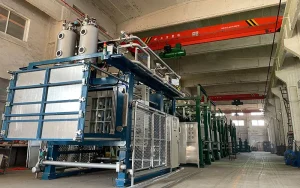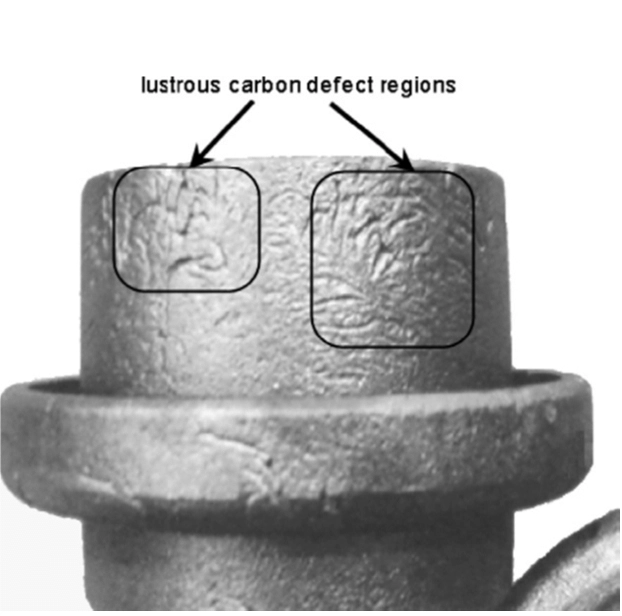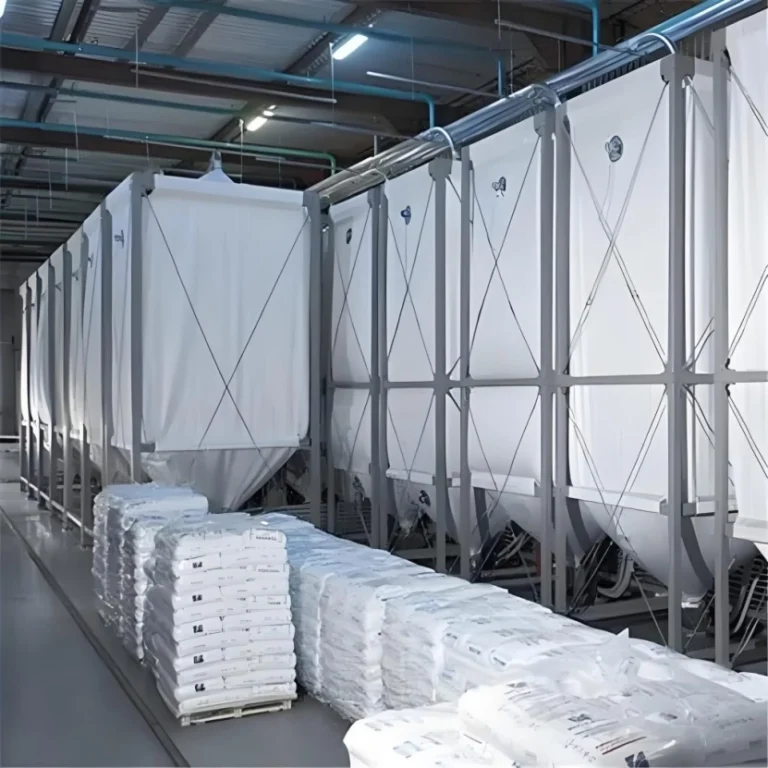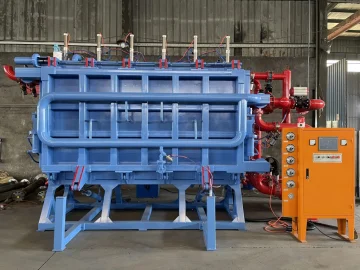Lost Foam Casting has become a very flexible and effective technique in many industries. This is a technique where one prepares a foam pattern-usually made of expanded polystyrene (EPS)-and then coats it with a refractory material followed by investment with sand. In this technique, pouring the molten metal into the mold vaporizes the foam and leaves behind an accurate metal casting.
Probably one of the critical benefits behind lost foam casting is the low finishing that needs to be performed on an as-cast component; hence, being very popular within industries requiring the manufacture of high-accuracy and complicated geometrical parts. As such, this blog will present various ways in which different sectors are using the lost foam casting supply to attain these benefits using the lost foam casting technique. More on Application

Automotive Industry
Automotive is one of the major sectors dependent on lost foam casting supplies. Increasing demand for lightweight, fuel-efficient, and performance-oriented vehicles has compelled automotive manufacturers to adopt lost foam casting for producing a number of vehicle parts.
Engine Blocks and Cylinder Heads: Lost foam casting provides for making complicated internal geometries-intricate cooling passages, intake manifolds-fairly applicable for the enhancement of performance and efficiency in motors.
Transmission Cases: The method is quite compatible with making light yet strong transmission casings, which provide for very great dimensional accuracy; it furthers gear changes even smoother and raises fuel economy to higher values.
Suspension: Through lost foam casting, parts like control arms, knuckles, and brackets have become stronger and more accurate, increasing the durability and handling of vehicles.
Aerospace Industry
The aerospace industry is another sector that demands excellent strength-to-weight ratios, resistance to high temperature, and tight dimensional tolerances. Lost foam casting meets these criteria and hence is an excellent manufacturing method for important aerospace components.
Turbine Blades: Lost foam casting has helped to realize intricate blade shapes with internal cooling channels, considered one of the key factors for turbine efficiency in jet engines.
Aircraft Structural Components: The use of lost foam casting manufactures light yet robust components such as brackets, housings, and frames, helping to reduce the overall weight of the aircraft and hence enhancing fuel economy.
Engine components: The precision casting of the fuel injector, fuel injector housings, and other components of the engine contributed toward the general efficiency and safety of the aerospace engine.
Industrial Machinery
Manufacturing of the industrial machinery sector uses Lost Foam Casting to create sturdy and highly complicated pieces that can withstand even the toughest working conditions.
Pumps and Valves: With internal passages and geometrical complexities, it offers improved fluid flow and critical control in pumps and valves.
Gearboxes and Housings: Lost foam casting is apt for gearbox and housing parts due to the robustness, strength, and precision it offers for operation with reliability and durability.
Tooling and Fixtures: Lost foam casting can economically produce custom tooling and fixtures of complicated geometries to offer solutions peculiar to the requirements of every manufacturer.
Marine Industry

The marine sector presents conditions in which resistance of material or component to corrosion, resistance in harsh environments, and for long-term durability are under strong demand. In such a sector, lost foam casting has proved a jewel.
Propellers: Lost foam precision casting of propellers offers efficiency gains and strength in marine operations and hence is of essence in better propulsion of vessels at optimum cost in terms of fuel consumption.
Pumps and Piping Systems: The technique of lost foam casting helps in the making of corrosion-resistant parts with several complicated designs to ensure that the pumps and piping systems of any marine vessel function effectively and reliably.
Hull and Structural Components: This includes heavy and light castings of hull sections, bulkheads, and other structural components produced by lost foam casting in order to give strength and seaworthiness to the vessels.
Power Generation
The power generation facilities depend upon parts which can bear very high temperature and pressures, and the lost foam casting plays an important role in the manufacture of such parts.
Turbine Components: Lost foam casting produces accurately cast blades, vanes, and other turbine components according to the high demanding requirements that power generation turbines have for efficient energy conversion.
Heat Exchanger Parts: The lost foam casting technique helps in manufacturing complicated heat exchanger components which may contribute to enhanced thermal performance, hence improved efficiency of the power plants with the least energy losses.
Boiler Components: Heat-resistant castings for different boiler systems are made with durable materials to ensure safe and reliable operation under high pressure and high temperature.
Medical Equipment
Biomedical applications require diagnostic, therapeutic, and patient care equipment or devices that are accurate, dependable, and biocompatible. Now, lost foam casting finds many applications in this critical industry:
Surgical Instruments: Surgical instruments such as forceps, clamps, and retractors made by lost foam casting have very great accuracy and reliability in surgeries.
Implantable Devices: These include parts like joint replacements, dental implants, and bone plates that are cast through lost foam casting to get accurate and biocompatible castings, thus implanting safe and durable implants in the patients.
Diagnostic Equipment: Lost foam casting makes possible the housings and structural parts for diagnostic machinery, such as X-ray machines and MRI scanners, to ensure that these lifesaving medical appliances are accurate and reliable.
Lost Foam Casting Supplies: A Growing Market
The growing demand for lost foam casting in several industries is resultant in an excellent market for the lost foam casting supplies. Materials and equipment that constitute the lost foam casting supplies are numerous and include:
- Foam Pattern Materials: Expanded polystyrene (EPS) is the most commonly used foam pattern material due to its ease of processing, low cost, and clean vaporization during casting. Other foam materials, such as polymethyl methacrylate (PMMA), are also used in specific applications.
- Refractory Coatings: Refractory coatings are applied to the foam patterns to create a barrier between the molten metal and the sand mold. These coatings must withstand high temperatures, prevent metal penetration, and provide a smooth surface finish on the final casting.
- Sand Molding Materials: Various types of sand are used in lost foam casting, including silica sand, zircon sand, and chromite sand. The sand must be compatible with the metal being cast, provide adequate permeability for gas escape, and maintain dimensional stability during the pouring process.
- Lost Foam Casting Equipment: A wide range of specialized equipment is used in lost foam casting, including foam pattern molding machines, coating systems, sand molding machines, pouring equipment, and finishing equipment. The selection of equipment depends on the specific requirements of the casting process, such as the size and complexity of the parts being produced, the production volume, and the level of automation desired.
Hangzhou Ouchen Technology Co., LTD: Your Lost Foam Casting Partner
Hangzhou Ouchen Technology Co., LTD is the leading company that provides high-class intelligent lost foam casting equipment. In addition, with the mission to innovate and satisfy customers, Hangzhou Ouchen Technology supplies a full range of lost foam casting solutions related to the special needs of different industries, including:
Molding Machines: Fully automatic molding machines of modern specification and performance to ensure that EPS foam patterns are made with accuracy in the least possible time.
Pre-foaming Machines: Modern, high-performance pre-foaming machines always ensure consistent and reliable pre-expansion of the EPS beads for quality foam patterns.
Air Dryers: Efficient, low-power air dryers designed with specific drying control of foam patterns and coatings to assure optimum performances in casting.

Central Vacuum Systems: Powerful central vacuum systems for the effective and reliable vacuum cooling of foam patterns to improve dimensional accuracy and surface finish of the castings.
Maturation Silos: Advanced maturation silos with controlled maturation of the pre-expanded EPS beads for enhancement in expansion properties of the foam pattern.
Hangzhou Ouchen Technology Co., LTD is committed to advanced technology, quality products, and after-sales service for customers. With a professional team of engineers, the unwavering attention of Hangzhou Ouchen Technology to research and development never stops in innovating for the dynamic demands of lost foam casting. Contact Hangzhou Ouchen Technology today to discuss your lost foam casting equipment needs and learn how their advanced solutions can improve your manufacturing processes and product quality.
Conclusion:
Lost foam casting supplies are needed to meet the demand in quality and precision-engineered parts for several industries. Keeping this in perspective, growing interests for lightweight, hard-to-make, strong, and advanced parts could continue Lost foam casting growth to keep up the pace sustainably.
This is combined with advanced casting techniques and is at an advanced level with the most famous suppliers, like Hangzhou Ouchen Technology Co., LTD, in order for manufacturers to take a further step into the production process: reducing production costs and increasing the quality of the manufactured parts. Lost foam casting boasts versatility and effectiveness to meet today’s manufacturing challenges-from automotive and aerospace up to industrial machinery.





